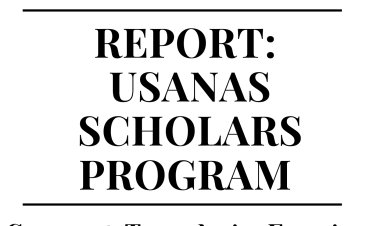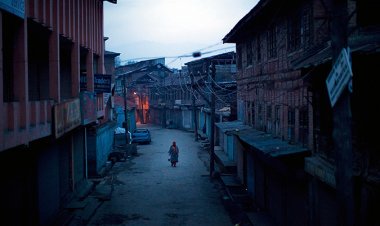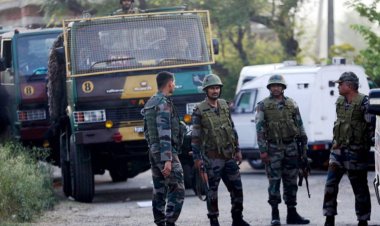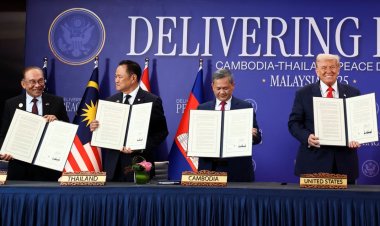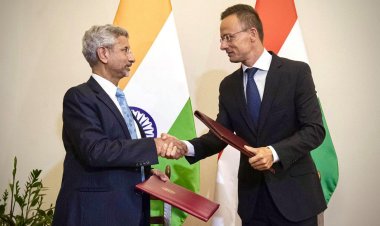Unraveling China's Latest Infections in its Viral Vortex
The present discourse is concerned with the emergence of novel respiratory infections in China, particularly those caused by Mycoplasma pneumonia, which is observed to be affecting the younger population. Additionally, this article delves into the measures taken by the Chinese authorities in response to the concerning situation.
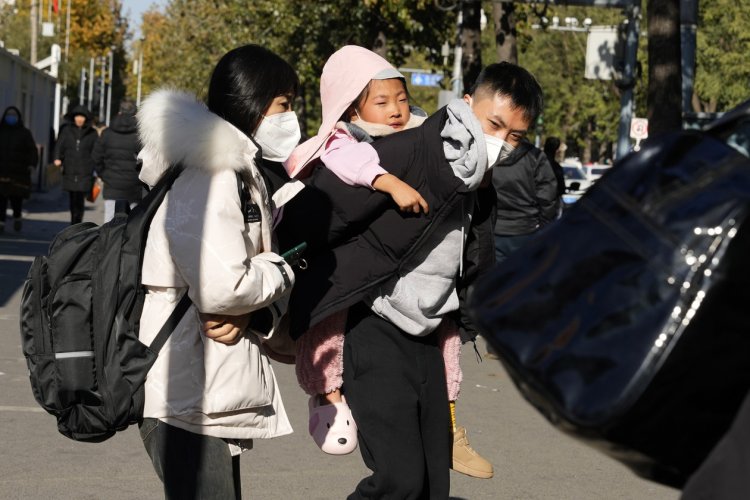
Explainer
By Mehak Johari
As autumn and winter approaches countries located in the Northern spheres, a spike in respiratory infections and diseases is often considered a common phenomenon. However, the new wave of respiratory infections found in China, especially in children, has sparked discussion amongst public health practitioners and leaders not only in China but worldwide. Children's hospitals in Beijing, Shanghai, Guangzhou, Chongqing, Henan, Hebei, and other places are seeing an increase in the number of children infected with Mycoplasma Pneumonia, also known as ‘walking pneumonia’. The surge in the emergency cases has pushed the Disease Control Department of the Chinese state to issue notices, notifying its citizens to immediately seek medical treatment if they seem to be displaying symptoms of Mycoplasma Pneumonia instead of brushing it off as common chest cold and self-medicating.
What is Mycoplasma Pneumonia?
Mycoplasma pneumonia is a bacterial infectious disease caused by Mycoplasma Pneumoniae. It primarily affects the respiratory system causing symptoms similar to pneumonia, such as cough, fever, fatigue, and difficulty in breathing. The severity of the symptoms depends on the extent of the infection in the patient. The disease progresses slowly, but once it develops, the patient suffers from a severe and persistent dry cough. Mycoplasma pneumoniae bacteria spreads easily in crowded or confined areas. It takes about 1 to 3 weeks to grow. Diagnosis requires testing for anti-M. pneumoniae IgM levels 7-9 days after onset, with a 4-fold increase after 4 weeks. Azithromycin or doxycycline/minocycline are treatments, but not for patients under 8. Alternative treatments may be needed for drug-resistant cases. WHO demands more info on respiratory illnesses in children. Chinese citizens urged to follow preventive measures to control the spread of bacteria & reduce risk of respiratory diseases. Measures include vaccinations, maintaining safe distance, avoiding large gatherings & wearing masks. One of the major recommendations for the Chinese citizens is to avoid going to crowded places and staying at home. It has been emphasized that school-going children are particularly vulnerable to the transmission of dangerous pathogens. In fact, some schools in China have already suspended classes due to this issue. Since there are currently no vaccines available for these bacteria, it is crucial for people to maintain good hygiene practices, ensure proper ventilation in their homes, and avoid crowded areas in order to prevent the spread of this infection.
Why Has it Become a Cause of Concern?
Even though Mycoplasma Pneumonia is the most common community-acquired pneumonia in China in children above 5 years of age, it has become a cause of concern in the country. While many experts still believe that the high incidence of Mycoplasma pneumonia is because of the seasonal changes due to the incoming of autumn and winter, other experts believe that this surge in cases is also because of the increase in the number of susceptible people due to the strict covid restrictions for three years as well as due to the lack of awareness and knowledge amongst people about the severity of Mycoplasma pneumonia. Mycoplasma pneumonia is considered a self-limiting disease because the human body’s immune system is often capable of effectively fighting off this infection without any specific medical treatment. Most infected patients experience certain mild symptoms like high fever or cough and recover within a span of a few weeks. However, in some cases, Mycoplasma Pneumonia can cause more serious symptoms and other complications, especially when the patient has a weakened immune system or other underlying health conditions. This is primarily the reason why it has grown as a cause of concern. At the beginning of the pandemic, China implemented the extremely restrictive ‘zero-covid’ policy on its people, which achieved considerable degree of success in containing the spread of infections amongst its citizens. However, this policy was abruptly dropped by the Chinese state in December 2022 which led to a spur in the infection rates in China since majority of the Chinese population had not been affected by the virus and, thus, could not develop immunity against it. This might also be the underlying cause for the large-scale spread of acute respiratory infections and the influenza epidemic that hit China at the end of February 2023, which was considered the non-influenza season. However, so far, no deaths have been reported because of these infections.
A large section of parents in China are concerned about the occurrence of ‘white lungs’ caused by Mycoplasma Pneumonia. While most symptoms of Mycoplasma pneumonia are not of any grave concern, it can, sometimes, lead to the formation mucus plugs that block bronchial tubes. This can lead to partial or complete collapse of a lung or a section of it due to the inability of the air sacs to expand. This leads to decreased air content in the affected lung and when observed on X-rays or CT scans, this decreased air content comes across as “white lungs”. However, this condition seems to be different from the diffuse lesions found when both lungs are uniformly affected. When mixed with other infections like influenza and respiratory syncytial virus, Mycoplasma Pneumonia becomes even more difficult to treat.
The latest wave of Mycoplasma Pneumonia has further exacerbated the pressure on the Chinese public health infrastructure that was still reeling with the pressure of the Covid-19 pandemic. Quzhu Maternal and Child Health Hospital has reported significant congestion and have had to deal with over 500 paediatric patients and emergency cases, approximately 50% more than usual. Paediatricians and emergency doctors have had to work at least 3 hours more than their normal working hours and paediatric wards of majority hospitals all over the country have been functioning at maximum capacity to treat the overwhelming number of cases. The Paediatric Respiratory Department of the First Affiliated Hospital of Henan University of Traditional Chinese Medicine have received about 6,000 to 7,000 cases of children suffering from respiratory diseases every week, out of which approximately 20% have been diagnosed with Mycoplasma Pneumonia.
This new wave of infections has taken a huge toll on the parents with children suffering from Mycoplasma Pneumonia infections. On November 21, 2023, a reporter from Poster News visited the Children’s Hospital Affiliated to the Capital Institute of Paediatrics and saw how the outpatient hall was overcrowded with parents trying to pay fees and take medications for their children. The reporter saw that the waiting list for comprehensive internal medicine clinic was full that day and about 628 people were waiting in line for treatment in the emergency internal medicine department. Many families had to bring their own folding chairs as they waited in the hospital corridors for their child to get infusions. As children stood in long queues waiting for their turn at the blood collection window, their parents stood at equally long queues to collect the test reports at corresponding windows. For some parents, it took almost 3 hours just to get their child examined, get a blood test, and collect the reports, with them having to wait even longer to get a doctor to read the examination report. For some children, it was the 10th day of having to suffer through endless examinations and doctors’ consultation. This was because of the commonality of the symptoms of Mycoplasma Pneumonia that resembled common cold and cough. In the initial stages of this infection, in many kids, the test for Mycoplasma Pneumonia came back negative, making the doctors prescribe a small doze of Azithromycin for 5 days and sending them back home. However, after the symptoms refused to subside even after 3 days of taking the medication, when the children were brought to the hospital for a lung X-ray, it showed that the children had developed white lungs, further shocking the parents.
What Has Been China’s Response?
The Chinese state has maintained its position that it has been monitoring the situation since October 2023 and that there are no unusual pathogens that are a cause of concern for the world. It has called upon its experts to report to the world that this surge in infections is a mere outcome of the lack of herd immunity in the citizens and seasonal changes that are known to be responsible for the circulation of known pathogens like influenza, mycoplasma pneumonia, SARS-CoV-2, etc. Chinese authorities had also promised at the WHO forum that it had already taken adequate steps to deal with the current wave of infections through increased disease surveillance in the healthcare facilities and public spaces as well as enhanced the capability of the Chinese health infrastructure to deal with the high surge of incoming patients. However, no concrete steps have been taken by the government till date to ease the pressure on its public health infrastructure and healthcare authorities.
The All-India Institute of Medical Sciences (AIIMS) hospital in Delhi had detected seven positive samples of the Mycoplasma Pneumonia from April to September 2023. Even though AIIMS Delhi assured that these cases of pneumonia had no link to the recent increased in respiratory infections in Beijing and associated areas in China, there has been a global concern about the possibility of the spread of this infection to other countries, outside of China (like the SARS-CoV-2 virus that caused the Covid-19 pandemic).
In conclusion, the emergence of Mycoplasma Pneumonia in China has both sparked scientific interest as well as raised public awareness regarding these infections. The COVID-19 pandemic has made the world extra cautious when comes to the investigation and monitoring of new waves of viral infections. However, Mycoplasma Pneumonia does not pose any significant threat to public health, especially outside of Chinese mainland, that would necessitate widespread alarm amongst citizens. Based on the mild symptoms exhibited by the children affected by this bacterium and the effective management measures implemented by the Chinese public healthcare officials, the spread of Mycoplasma Pneumonia is believed by experts to be limited and manageable. Despite this, it is still imperative for healthcare authorities, not only in China but all over the world, to maintain strict vigilance and ensure adequate measures for timely interventions in case the virus starts spreading like the SARS-CoV-2 virus and the situation evolves into something more urgent.
Disclaimer: This paper is the author's individual scholastic contribution and does not necessarily reflect the organization's viewpoint.
Mehak Johari is currently pursuing her second year of Masters in 'Diplomacy, Law and Business' at the esteemed Jindal School of International Affairs (JSIA) at OP Jindal Global University. She holds a degree in Political Science (Hons) from Mithibai College of Arts, Mumbai University. She is the Centre Coordinator of Centre for Security Studies (CSS), a dynamic student-led research center at JSIA.

